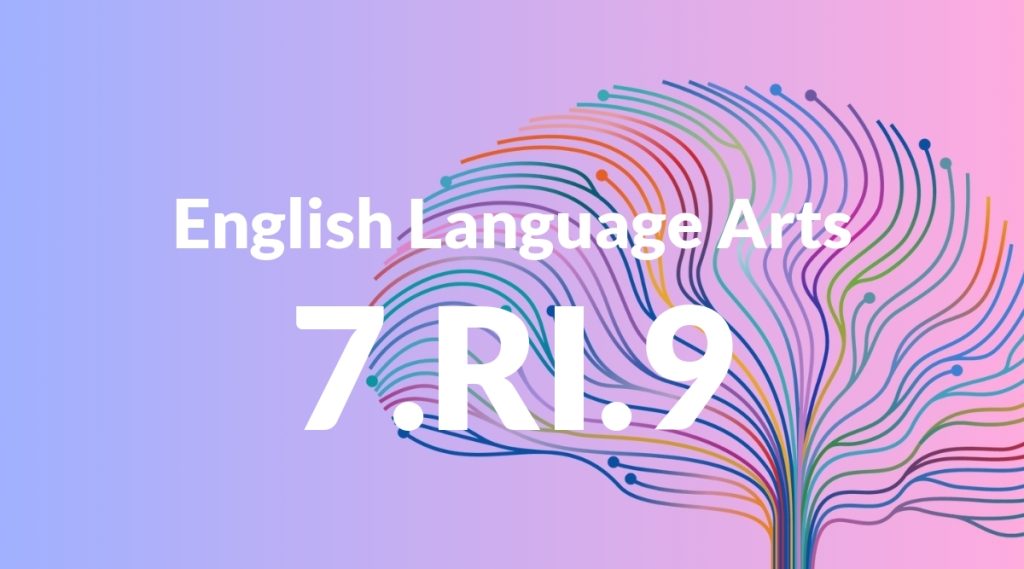Standard: 7.RI.9 – Analyze how two or more authors writing about the same topic shape their presentations of key information by emphasizing different evidence or advancing different interpretations of facts.
Grade level: Grade 7
Subject: English Language Arts
Domain: Reading: Informational Text
Teacher Overview
This standard focuses on analyzing how different authors approach the same topic by emphasizing various pieces of evidence or offering different interpretations. Understanding this helps students develop critical thinking skills and appreciate multiple perspectives, which are essential for higher-level reading and writing. Students should be able to identify the main idea and supporting details in a text, understand basic text structures (e.g., cause/effect, compare/contrast), and have experience with summarizing informational texts.
After mastering this standard, students will be able to critically evaluate the credibility of sources, synthesize information from multiple texts, and develop well-supported arguments based on their analysis.
Common Misconception 1
Students may believe that all authors present information in the same way. This misconception arises because students often encounter texts in isolation and may not have had the opportunity to compare different authors’ approaches.
Intervention 1
Introduce students to diverse writing styles and provide examples of different authors presenting the same topic in various ways. Encourage them to note differences and discuss why authors might choose to present information differently.
Common Misconception 2
Students might think that differing interpretations mean one author is incorrect. This misconception can occur because students are used to looking for ‘right’ answers and may not understand that multiple valid perspectives can exist.
Intervention 2
Teach students that multiple interpretations can coexist and that different authors may highlight different evidence to support their viewpoints. Use case studies or examples where multiple interpretations are valid and discuss the value of each perspective.
Prerequisite Knowledge
Students should be able to identify the main idea and supporting details in a text, understand basic text structures (e.g., cause/effect, compare/contrast), and have experience with summarizing informational texts.
Subsequent Knowledge
After mastering this standard, students will be able to critically evaluate the credibility of sources, synthesize information from multiple texts, and develop well-supported arguments based on their analysis.
Instructional Activities
- Compare and contrast two articles on the same current event.
- Analyze different historical accounts of a significant event.
- Evaluate scientific reports from different sources on the same study.
- Read multiple biographies of the same historical figure and discuss the differences.
- Review different reviews of the same book or movie and identify the varying perspectives.




